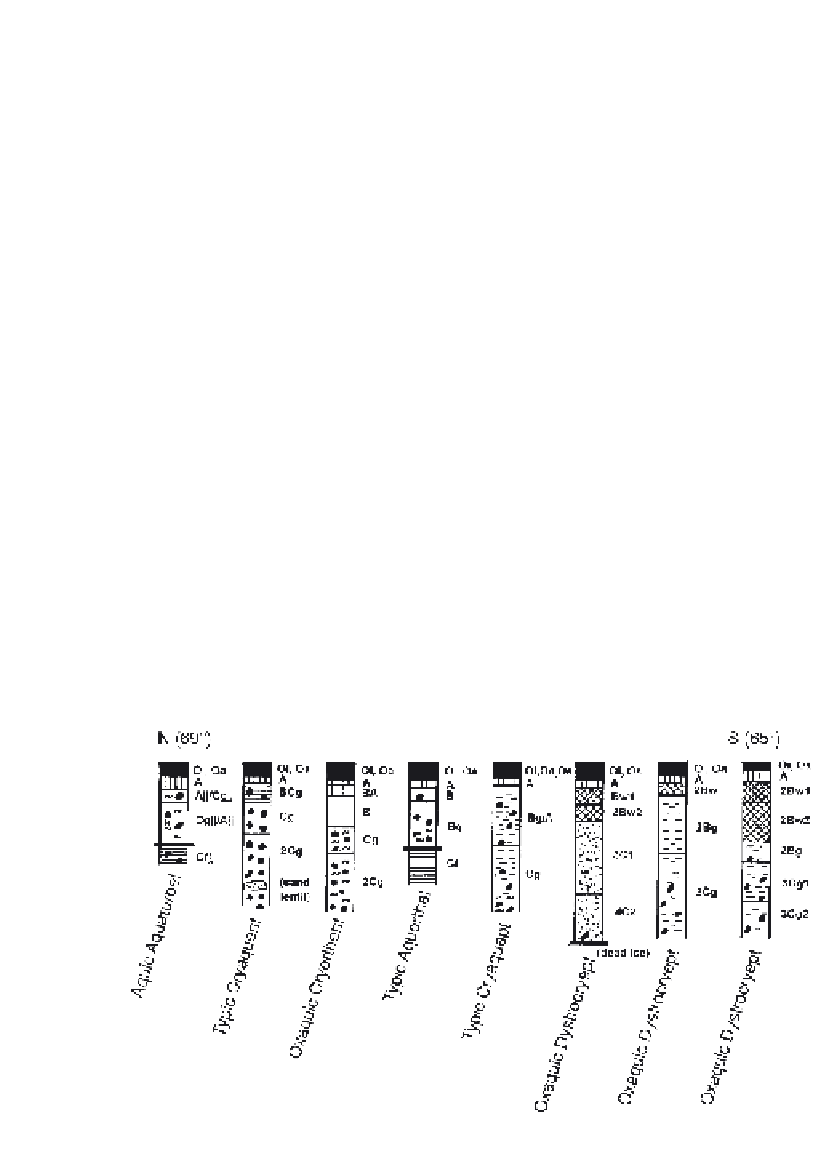Agriculture Reference
In-Depth Information
polycarboxylic acids released by HNO
3
oxidation according to Glaser
et al
.
(1998). The ratio of pentacarboxylic benzoic acid (b5ca) to hexacarboxylic
benzoic acid (b6ca) provides information on the degree of condensation.
Stable C and N isotopes of forest floor and mineral soil samples were
measured on a Finnigan MAT deltaS instrument, and
δ
13
C and
δ
15
N
values were referenced to PDB and N
2
of air, respectively.
Results and Discussion
Soil development in the belts of vegetation
The results of our pedological study are summarized in Fig. 4.14.1. All soils
showed thick mor-type forest floors. In the southern part of the transect,
we found as yet unknown intensive weathering horizons with distinct
loamification and enrichment of pedogenic oxides in Bw horizons. To the
north, the weathering horizons became less pronounced and disappeared.
Concurrently, there is a transition from only weak hydromorphic
(pseudogley) properties in the deep active layer of the southern soils to
strong gleyic properties in the shallow active layer of the northern pedons.
In contrast to the small-scale Soil Map of Russia (1995) which classifies
only 'kryotaiga soils' in the study area, our investigation indicates a zonal
compartmentation of the soils. With increasing hydromorphy due to the
higher permafrost table and decreasing evapotranspiration, there appears
to be a transition from well-developed Dystrocryepts (central taiga) to
Cryaquepts (northern taiga) to Cryaquents and Gelisols (forest tundra).
Fig. 4.14.1.
Classification of soils in the working area according to Soil Survey Staff (1998).











Search WWH ::

Custom Search